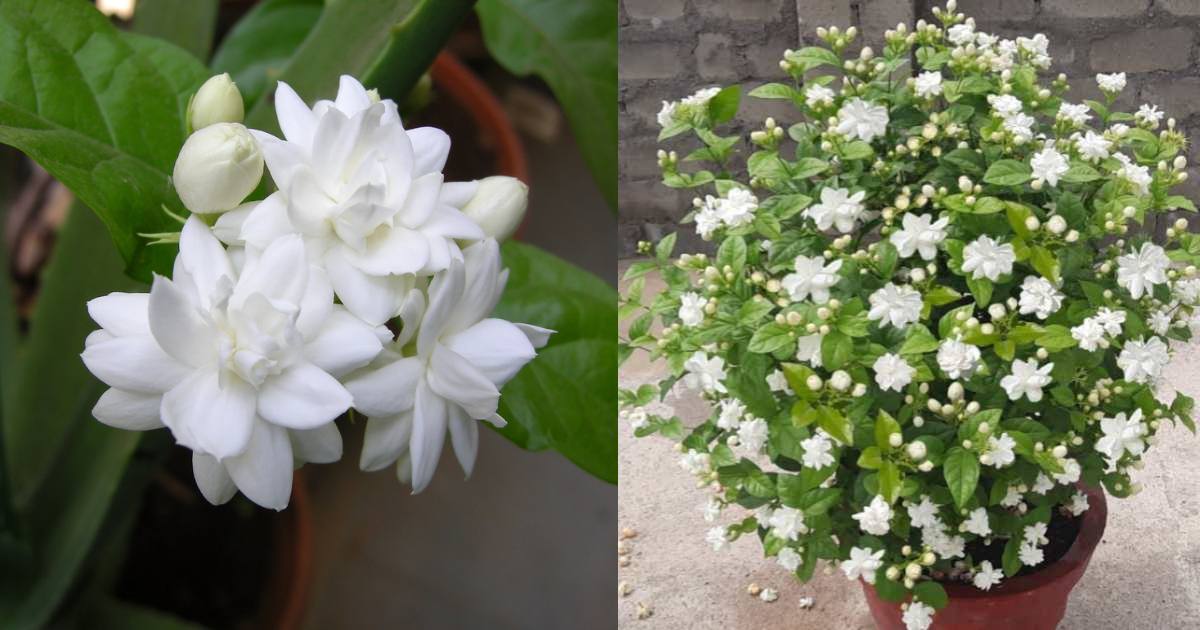
ഈ ഒരു രഹസ്യ സൂത്രം ചെയ്താൽ മതി ഏത് പൂക്കാത്ത മുല്ലയും പൂക്കും; മുല്ല കാടു പോലെ വളരാനും കുലകുത്തി പൂക്കാനും ഒരു കിടിലൻ സൂത്രം.!! Kuttimulla Flowering tip
Kuttimulla Flowering tip : മുല്ല കാടുപോലെ തഴച്ചു വളരാനും കുലകുത്തി പൂക്കാനും കിടിലൻ സൂത്രപ്പണി! ഇങ്ങനെ ചെയ്താൽ മതി ഏത് പൂക്കാത്ത മുല്ലയും ഉറപ്പായും പൂത്തിരിക്കും; ഇനി മുറ്റം നിറയെ മുല്ല വിരിയും. മുല്ല ചെടികളും മുല്ലപ്പൂവും ഇഷ്ടമല്ലാത്തവർ വളരെ ചുരുക്കമായിരിക്കും. ഏതു പ്രായക്കാർക്കും ഇഷ്ടപ്പെടുന്ന നിറവും മണവുമുള്ള മുല്ല പൂക്കൾ എങ്ങനെ വീട്ടിൽ തന്നെ നട്ടുവളർത്താം എന്നാണ് ഇന്ന് പറയാൻ പോകുന്നത്.
മറ്റ് പൂച്ചെടികളെ അപേക്ഷിച്ച് വളരെ കുറച്ചു മാത്രം പരിപാലനം ആവശ്യമുള്ള ഒന്നാണ് മുല്ലച്ചെടി. വർഷത്തിൽ ഒന്നോ രണ്ടോ തവണ മാത്രം പ്രൂൺ ചെയ്തു കൊടുക്കുകയും ഇടയ്ക്ക് എപ്പോഴെങ്കിലുമൊക്കെ വളപ്രയോഗവും ജലസേചനവും നടത്തുകയുമാണ് എങ്കിൽ വലിയതോതിൽ നമുക്ക് മുല്ലപ്പൂ കൃഷി ചെയ്ത് എടുക്കുവാൻ സാധിക്കും. പല സൈസിൽ ഉള്ള മുല്ലപ്പൂക്കൾ ഇന്ന് മാർക്കറ്റിൽ സുലഭമാണ്.
- Adequate sunlight: Kuttimulla requires adequate sunlight for flowering.
- Partial shade: Can tolerate partial shade, but flowering may reduce.
അവയിൽ 90 ശതമാനവും വീട്ടിൽ തന്നെ നട്ടുവളർത്താം എന്നതാണ് പ്രത്യേകത. എല്ലുപൊടി മുട്ടത്തോട് അടുക്കളയിലെ പച്ചക്കറി അവശിഷ്ടങ്ങൾ എന്നിവയൊക്കെ മുല്ലച്ചെടിക്കു അടിവളമായി നൽകാവുന്നതാണ്. പച്ചക്കറിയുടെയും അവശിഷ്ടങ്ങൾ ഒക്കെ മിക്സിയിലോ മറ്റൊ ഒന്ന് കറക്കിയ ശേഷം ഇട്ടുകൊടുക്കുന്നത് ഉത്തമം. രണ്ടോ മൂന്നോ തവണ പ്രൂൺ ചെയ്യുന്നതാണ് എപ്പോഴും നല്ലത്. മുല്ലച്ചെടി എപ്പോഴും സൂര്യപ്രകാശം
നന്നായി കിട്ടുന്ന ഇളകിയ മണ്ണിൽ വേണം. അത് ഒരുപാട് മൂത്തതും എന്നാൽ ഇളം പരുവത്തിൽ ഉള്ളതും ആകാതിരിക്കാൻ പ്രത്യേകം ശ്രദ്ധിക്കേണ്ടതാണ്. അടുക്കളയിലെ ചായപ്പൊടിയും മറ്റും കഴുകി നമുക്ക് മുല്ല ചെടിയുടെ ചുവട്ടിൽ ഒഴിച്ചു കൊടുക്കാവുന്നതാണ്. എങ്ങിനെയാണ് ഇതെല്ലം ചെയ്യേണ്ടത് എന്ന് വീഡിയോയിൽ വിശദമായി കാണിച്ചു തരുന്നുണ്ട്. മുഴുവനായും വീഡിയോ കണ്ടു നോക്കി ഇതുപോലെ നിങ്ങളും മുല്ല കൃഷി ചെയ്തു നോക്കൂ. Kuttimulla Flowering Trick Video credit : TipS noW
Kuttimulla Flowering tip
To promote abundant flowering in your Kuttimulla (jasmine) plant, follow these essential care tips:
1. Adequate Sunlight
- Jasmine plants thrive in full sunlight and need at least 4-6 hours of direct or indirect sunlight daily.
- Place the plant where it can get ample sunlight, such as a balcony, garden, or a sunny window if indoors.
2. Watering
- Water the plant moderately, ensuring the soil remains moist but not waterlogged.
- During flowering season, water once a week, and reduce watering during winter or rainy days to prevent root rot.
3. Proper Soil
- Use well-drained, rich organic soil with a pH between 6.0 and 7.0.
- Incorporate organic compost or vermicompost for healthy growth and better flower production.
4. Feeding and Fertilizer
- Feed with organic fertilizers like cow dung manure or neem cake every 15-20 days during the active growing season.
- Use liquid fertilizers rich in nitrogen, potassium, and phosphorus to boost flowering.
5. Pruning
- Regularly prune after flowering to remove dead or overgrown branches.
- Cutting back encourages bushier growth and more flowers in the next season.
6. Pest Control
- Watch for common pests like aphids or whiteflies; use neem oil or organic insecticides if needed.
- Keep the plant healthy and free of pests for better flowering.
7. General Maintenance
- Mulch around the plant to retain moisture, control weeds, and regulate soil temperature.
- Protect plants from extreme weather, especially cold or heavy rains.
Summary:
- Provide plenty of sunlight.
- Keep soil moist but well-drained.
- Regularly fertilize, prune, and control pests.
- Follow seasonal watering and maintenance practices for optimal blooms.

Comments are closed.